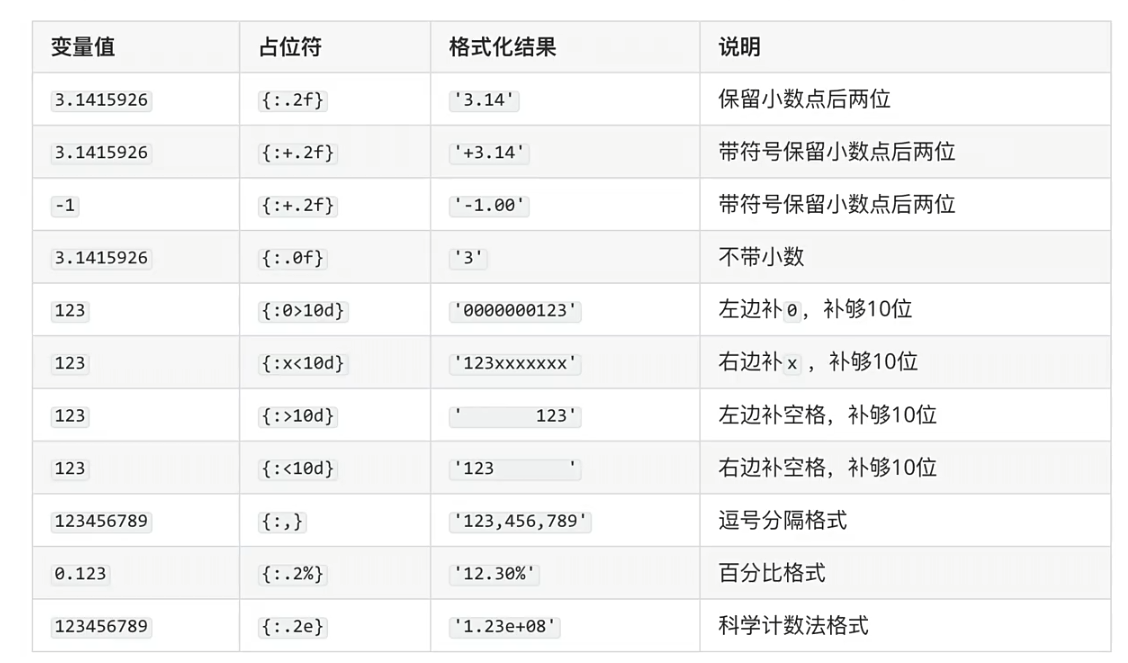在Python中,字符串格式化有以下几种方法:
1.可以使用字符串的str.center(width), str.ljust(width), 和 str.rjust(width)方法来实现字符串的居中、左对齐和右对齐操作。
-
居中对齐:
text = "Python" centered_text = text.center(10) # 在宽度为10的空间中居中对齐 print(centered_text) # 输出结果为 " Python " -
左对齐:
text = "Python" left_aligned_text = text.ljust(10) # 在宽度为10的空间中左对齐 print(left_aligned_text) # 输出结果为 "Python " -
右对齐:
text = "Python" right_aligned_text = text.rjust(10) # 在宽度为10的空间中右对齐 print(right_aligned_text) # 输出结果为 " Python"
2.使用百分号(%)进行格式化:
name = "Alice"
age = 30
formatted_string = "Name: %s, Age: %d" % (name, age)
print(formatted_string)
3.使用str.format()方法进行格式化:
name = "Bob"
age = 25
formatted_string = "Name: {}, Age: {}".format(name, age)
print(formatted_string)
4.使用模板字符串Template:
from string import Template
name = "David"
age = 40
template = Template("Name: $name, Age: $age")
formatted_string = template.substitute(name=name, age=age)
print(formatted_string)
5.使用f-strings(在Python 3.6及更高版本中可用):
name = "Charlie"
age = 35
formatted_string = f"Name: {name}, Age: {age}"
print(formatted_string)
如果需要进一步控制格式化语法中变量的形式,可以参照下面表格来进行字符串格式化操作:

如:
name = "Alice"
age = 30
height = 1.652# 控制小数点后的位数
print("Height: %.2f" % height) # 输出结果为 "Height: 1.65"# 控制字符串的长度
print("Name: %10s" % name) # 输出结果为 "Name: Alice"
print("Name: %-10s" % name) # 输出结果为 "Name: Alice "# 使用 f-string 格式化字符串
formatted_string = f"Name: {name}, Age: {age}, Height: {height:.2f}"
print(formatted_string)
# 输出结果为“ Name: Alice, Age: 30, Height: 1.65”
![[python][whl]python模块python_geohash的whl文件所有版本下载地址汇总](http://pic.xiahunao.cn/[python][whl]python模块python_geohash的whl文件所有版本下载地址汇总)
)






协会受邀出席广州意大利国庆晚宴)









